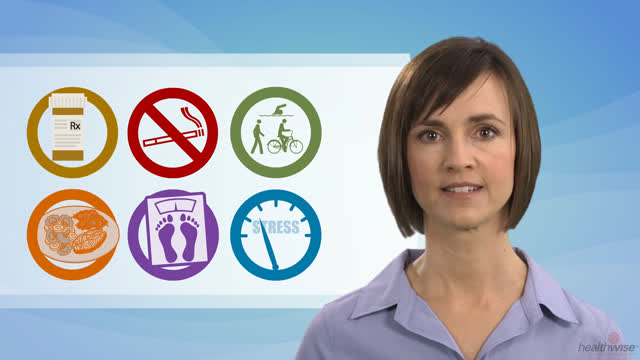Heart Health: Walking for a Healthy Heart
Introduction
Walking is a form of aerobic exercise and is one of the easiest ways to increase your physical activity and improve your health. Physical activity increases your heart rate, strengthens your heart, and increases blood circulation through your body, bringing more oxygen and nutrients to your organs. Exercise also increases your lungs’ ability to take in oxygen, lowers blood pressure, helps to reduce body fat, and improves blood sugar and cholesterol levels.
- Have a checkup before beginning an exercise program. If you have heart problems, your doctor may want to do tests to find out how much activity your heart can safely handle.
- Start out slowly at first, with a warm-up in the beginning, a faster pace in the middle, and a cooldown at the end.
- To stay motivated, walk with friends, coworkers, or pets. Set goals you can reach.
- Use a phone app or pedometer to count your steps. Wear it all day and try to take at least 2,000 more steps a day than you normally do, and gradually increase your steps over time.
- Set a goal. Try to walk at a moderate activity level for at least 2½ hours a week. One way to do this is to walk 30 minutes a day, at least 5 days a week.
How can I stay motivated with a walking program?
One of the best ways to stay motivated to walk is to include other people. Ask friends and coworkers to join you. Join a walking group or club.
- Use a phone app or buy a pedometer. Use it every day, and count your steps. The first time you use it, count how many steps you normally take in a day. Set a goal for increasing it each day or week. Try to start with an increase of 2,000 steps a day and work toward 10,000. Get others to join you and set goals as a group.
- Walk before or after work or on your lunch break. Instead of taking a snack or coffee break, take a walk break.
- If the weather is bad, use a treadmill. Or take comfortable shoes to the mall, and walk several laps inside.
- Walk to work, school, the grocery store, or a restaurant.
- Walk around your neighborhood, around an entire park, or to do errands.
- Schedule walks on your business calendar. Turn a walk into a brainstorming session with a coworker.
- Wear comfortable shoes and socks that cushion your feet.
- Drink plenty of water. Take a bottle with you when you walk.
- Be safe, and know your surroundings. Walk in a well-lighted, safe place.
- Plan family outings around walks together.
- Take your dog on a walk.
- Set a goal to participate in an organized fitness walk.
References
Other Works Consulted
- American College of Sports Medicine (2010). Exercise prescription for patients with cardiac disease. In WR Thompson et al., eds., ACSM’s Guidelines for Exercise Testing and Prescription, 8th ed., pp. 207–224. Philadelphia: Lippincott Williams and Wilkins.
- Eckel RH, et al. (2013). 2013 AHA/ACC guideline on lifestyle management to reduce cardiovascular risk: A report of the American College of Cardiology/American Heart Association Task Force on Practice Guidelines. Circulation. http://circ.ahajournals.org/content/early/2013/11/11/01.cir.0000437740.48606.d1.citation. Accessed December 5, 2013.
- U.S. Department of Health and Human Services (2008). 2008 Physical Activity Guidelines for Americans (ODPHP Publication No. U0036). Washington, DC: U.S. Government Printing Office. Available online: http://www.health.gov/paguidelines/guidelines/default.aspx.
Credits
Current as of: April 9, 2019
Author: Healthwise Staff
Medical Review:Rakesh K. Pai, MD – Cardiology, Electrophysiology & Kathleen Romito, MD – Family Medicine & Martin J. Gabica, MD – Family Medicine & Adam Husney, MD – Family Medicine & E. Gregory Thompson, MD – Internal Medicine
Current as of: April 9, 2019
Author: Healthwise Staff
Medical Review:Rakesh K. Pai, MD – Cardiology, Electrophysiology & Kathleen Romito, MD – Family Medicine & Martin J. Gabica, MD – Family Medicine & Adam Husney, MD – Family Medicine & E. Gregory Thompson, MD – Internal Medicine






